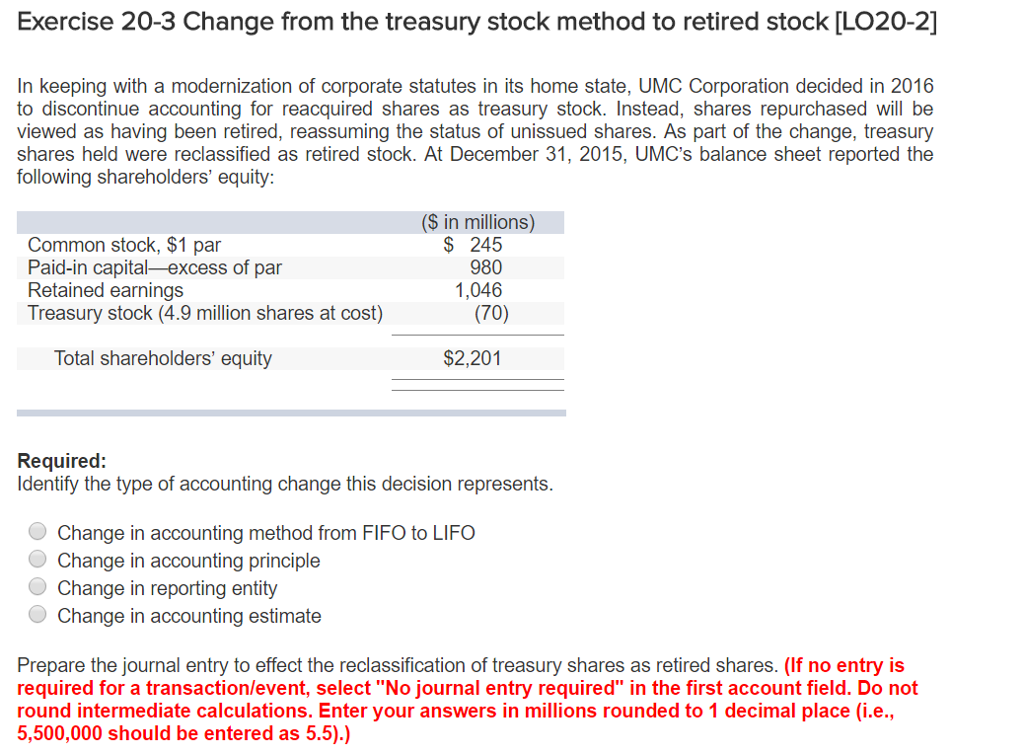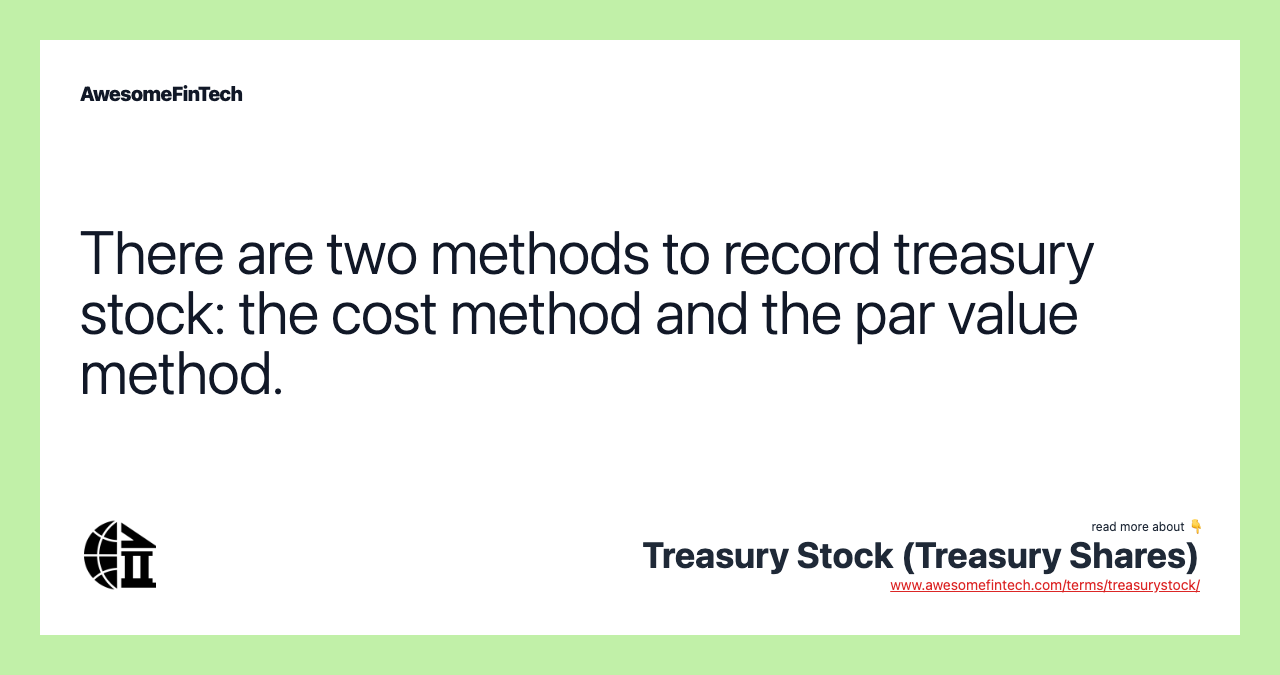
After listing or listing on the Taiwan Stock Exchange, these shares will be circulated to the secondary market, where we usually place our orders and become the so-called ‘Outstanding Stocks’! Simply put, treasury stock is when a company uses cash to buy back its shares! Imagine a company is like a shopkeeper who likes his products, and when he sees that they are selling well, he chooses to repurchase some of them. A company that announces a treasury stock program usually sets a purchase limit, but how much is repurchased?
- The entries used in the method are thus structured as if the shares have been retired.
- When the shares are reissued, Cash is debited for the proceeds and Treasury Stock is credited for the amount paid out originally.
- In the second case, when the stock is retired at a price below its original issue price, Paid-in Capital from the Retirement of Common Stock is credited.
- In comparison, non-retired treasury stock is held by the company for the time being, with the optionality to be re-issued at a later date if deemed appropriate.
- Its balance represents only the claims arising from the original investment of par value that were satisfied by distributing assets.
Par Value Method of Treasury Stock FAQs
When a company decides to repurchase treasury stock, it often requires a significant cash outlay. This expenditure can impact the company’s liquidity, particularly in the short term, as cash flow may become tighter. Therefore, companies usually conduct a careful cash flow assessment before deciding on a buyback to ensure that core operations won’t be affected and that unexpected funding needs can be met. Under the cost method, treasury stock is recorded at the price paid for the repurchase. There’s no immediate impact on APIC or Retained Earnings at the time of repurchase.
Treasury Stock Cost Method vs. Par Value Method
The simplest and most widely-used method for accounting for the repurchase of stock is the cost method. The agency problem between the company and its employees can be solved simultaneously. Occasionally, a corporation’s board of directors will vote to execute a special purchase of non-callable stock with the express purpose of retiring the shares rather than holding them indefinitely as treasury stock. If allowed by state laws and the corporation’s bylaws, the board of directors can vote to retire shares of stock. This action goes beyond the acquisition of treasury shares by actually removing them from the issued category.
Accounting for Treasury Stock
Retired shares are treasury shares that have been repurchased by the issuer out of the company’s retained earnings and permanently canceled. While other treasury shares can be reissued or sold on the open market, retired shares cannot be reissued, they have no market value and they no longer represent a share of ownership in the issuing corporation. Retired shares will not be listed as treasury stock on a company’s financial statements. Under the par value method, the treasury stock account is debited to decrease total shareholders’ equity at the time of share repurchase. This is done in the amount of the par value of the shares being repurchased.
Reviewed by Subject Matter Experts
There are two methods of accounting for treasury stock, the cash method and the par value method. Both methods have different ways of treating reacquisitions and resale of shares. Consider a company that reports 100,000 basic shares outstanding, $500,000 in net income for the past year, and 10,000 in-the-money options and warrants, with an average exercise price of $50. Let’s assume that the average market price for the shares in the last year was $100. Using the basic share count of the 100,000 common shares, the company’s basic EPS is $5 calculated as the net income of $500,000 divided by 100,000 shares.

Great! The Financial Professional Will Get Back To You Soon.
The cash account is credited for the amount paid to purchase the treasury stock. After a repurchase, the journal entries are a debit to treasury stock and credit to the cash account. If the company’s share price has fallen in recent periods and management proceeds with a buyback, doing so can send out a positive signal to the market that the shares are potentially undervalued. Treasury shares are not considered as outstanding stock because they do not receive dividends and cannot effectively vote at meetings. They belong to the issuer even when they were initially issued at a discount rather than the market price. To record a repurchase, simply record the entire amount of the purchase in the treasury stock account.
Treasury stock is an account created for any shares that are repurchased by a company only if the company intends to resell those shares. If the company plans to retire these shares, treasury stock accounts are not created. Companies may have different reasons to reacquire their shares and can be reacquired using different methods.
Many corporations also acquire treasury shares as a way of investing in corporate funds. PwC refers to the US member firm or one of its subsidiaries or affiliates, and may sometimes refer to the PwC network. This content is for general information purposes only, brooklyn ny accounting and tax preparation firm and should not be used as a substitute for consultation with professional advisors. Other times, a company may buy back public shares as part of a reorganization that contemplates the company “going private” or delisting from some particular stock exchange.
It is not reported as an asset; rather, it is subtracted from stockholders’ equity. The presence of treasury shares will cause a difference between the number of shares issued and the number of shares outstanding. Following is Embassy Corporation’s equity section, modified (see highlights) to reflect the treasury stock transaction portrayed by the entry. Conceptually, the treasury stock method (TSM) approximates what a company’s earnings per share (EPS) would be under the assumption that its dilutive securities are exercised.
